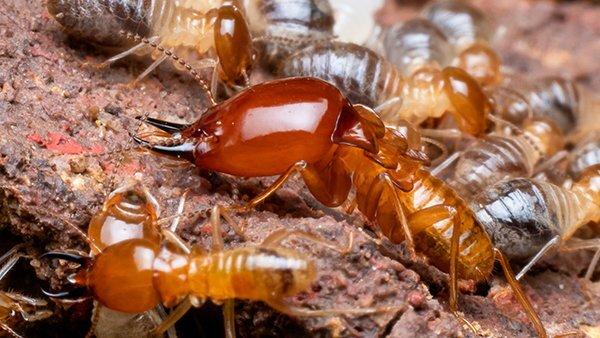Termites can eat you out of the house and home. Because of that, there are a lot of myths about termites out there. Here we discuss the most common myths we hear from our customers.
Myth: Termites Serve No Purpose; They Simply Exist To Destroy
Truth: Termites are beneficial insects in the wild. They convert dead trees and other tough plant fibers into soil for the forest. They also aerate the soil when they tunnel through it. If it weren’t for termites, we would be drowning in dead trees.
Myth: Termites Are Part Of The Ant Family
Truth: Termites are most closely related to the wood cockroach. They are not part of the ant family. But worker termites do look similar to "white ants." Termites belong to the order Blattodea, which they share with cockroaches. They used to be in their order, but recent studies have shown they are related to the wood cockroach.
Myth: If I Have A Lot Of Mulch Or Decaying Wood Nearby, Termites Will Leave My Home Alone
Truth: If you leave a lot of mulch and decaying wood piled up in your yard, you are just putting out the appetizers to welcome them to your home. The queen and king found a colony. It takes 2-4 years for the nest to mature. A colony of termites can contain 21,000 to 365,000 termites. That is a lot of mouths to feed. Workers are constantly searching for more food. From the backyard, your house looks appetizing.
Myth: Termite Infestations Are Easy To Detect
Truth: Termite infestations are hard to detect and are usually found after extensive damage has been done to a home. Some signs you have termites are:
- Blisters in the floor – If the termites are eating the wood under the floor, it can look like water damage.
- Hollowed out or damaged wood – This is usually found when someone puts a screwdriver through a stud or other important piece of wood.
- Swarms – When reproductives fly to find a mate, they may enter the living space, and/or you will find twisted-off wings at a windowsill.
- Drywood termite pellets – Drywood termites like to keep their nests clean so they deposit little piles of wood pellets outside the nest where you can find them.
- Mud tubes – Subterrain termites construct mud tubes up against your house so they can access it without leaving the climate-controlled nest.
Myth: Termites Can Eat Through Concrete
Truth: Termites cannot eat through concrete but may take advantage of any cracks or crevasses to enter a home if the cracks and crevasses exist. Termites can chew through wood, cardboard, carpet, insulation, sheetrock, wallboard, and fabric.
Myth: If A House Has Been Treated For Termites Once, You Never Have To Worry About Termites Again
Truth: Termites can come back. Pesticides degrade over time. Unless your house is inspected at least yearly, and the termite pesticide barrier is re-applied, you are vulnerable to termites again. Baits should be inspected and refilled quarterly.
Myth: You Can Get Rid Of Termites On Your Own
Truth: Termites are extremely difficult to treat. It requires special equipment and a license to use most of the products that kill termites. The stuff sold at retail stores just won’t do the job. If you think you have termites, contact All-Safe Pest & Termite.
We have extensive experience in eliminating current infestations and preventing future infestations. When you call, we will discuss your situation and set up an appointment to inspect and treat your house. Don’t wait until your house has extensive damage. Call All-Safe Pest & Termite today at (972) 945-9226 or (972) 945-9226 to get rid of your termites.



